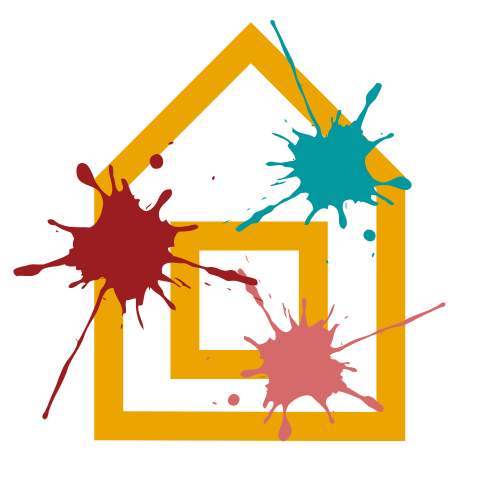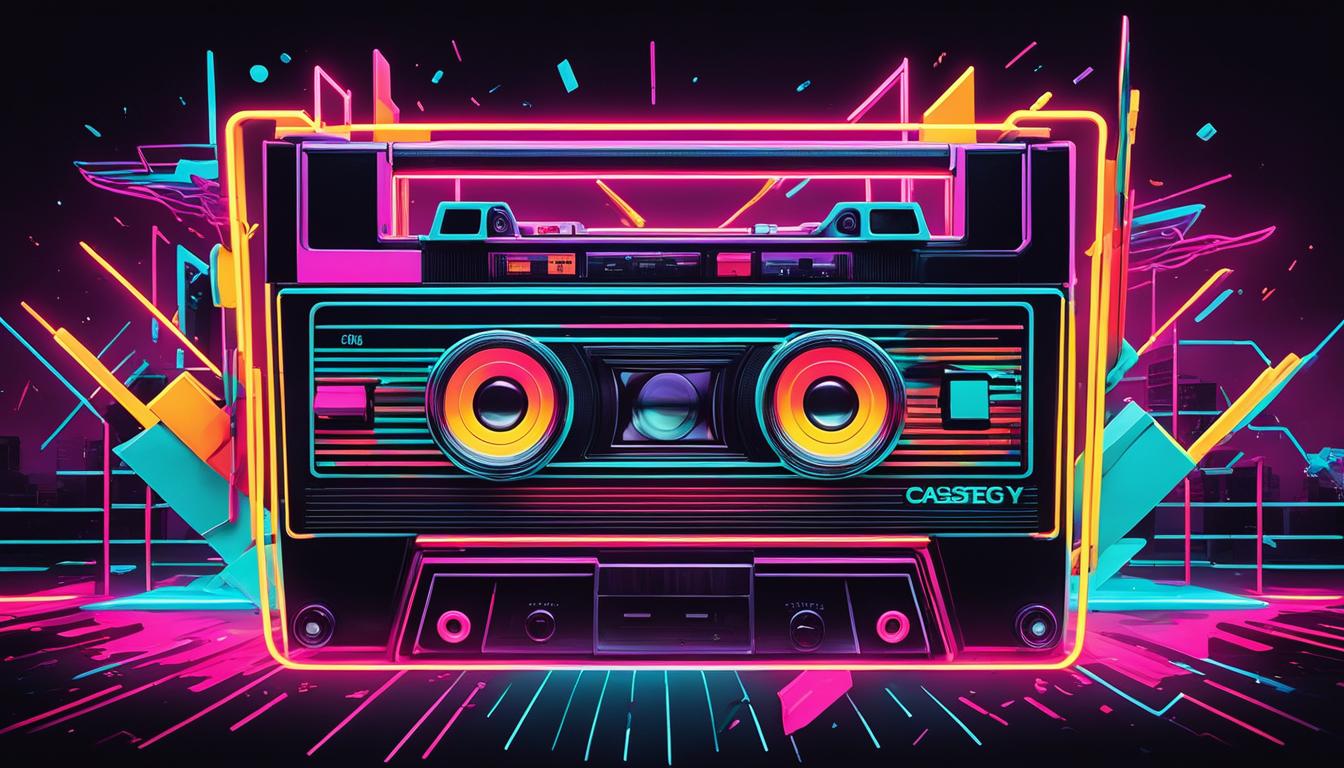The 1980s was a decade of artistic exuberance, where creativity flourished in various art movements. From the explosiveness of pop art to the raw expression of graffiti, the 80s art scene was a vibrant cacophony of styles and mediums.
We invite you to join us on a journey through the colorful world of 80s art. From the iconic imagery of retro and pop art to the abstract and urban expressions of graffiti, we will explore the trends and icons that shaped this dynamic period.
Buckle up and get ready to dive into the mesmerizing world of 80s art – a fusion of neon lights, bold colors, and avant-garde techniques. Prepare to be dazzled by the energy and creativity that defined this unforgettable era.
The Colorful Nature of 80s Pop Culture
Step into a vibrant time machine and immerse yourself in the colorful world of 80s pop culture. This era was a visual explosion of bold colors, vibrant imagery, and a techy look that defined the decade. From the rise of video games to animated cartoons, the 80s brought forth a captivating aesthetic filled with energetic and eye-catching elements.
Influenced by fashion trends and music videos, the 80s pop culture scene embraced a kaleidoscope of hues and bold color choices. From neon pinks and electric blues to vibrant yellows and bold purples, the 80s color palette was anything but shy. Whether it was a colorful outfit or an eye-popping set design, bold colors were a prominent feature in the visual landscape of the 80s.
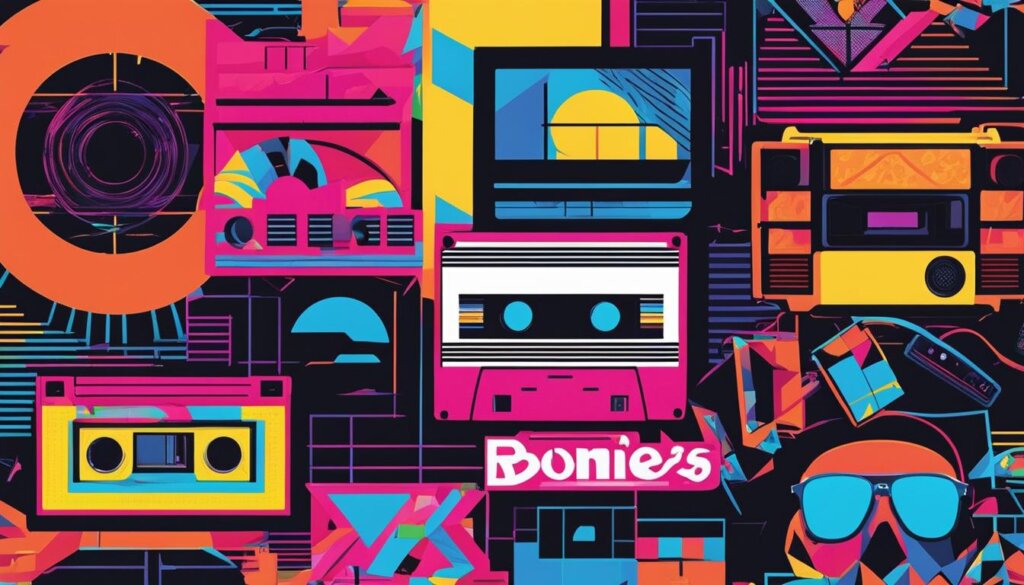
The vibrant imagery of 80s pop culture extended beyond colors. It was an era that gave birth to unforgettable characters and iconic logos that still hold a special place in our hearts today. Think about the colorful and memorable mascot of Super Mario, the techy look of the Ghostbusters’ proton pack, or the vivid illustrations of Saturday morning cartoons. The 80s pop culture was a feast for the eyes, packed with vibrant imagery that left a lasting impact.
When it came to their outfits, people in the 80s didn’t shy away from expressing themselves through colorful and daring fashion choices. Whether it was sporting bold and funky prints, embracing futuristic designs, or donning vibrant and outrageous ensembles, the colorful outfits of the 80s were a reflection of the era’s larger-than-life attitude.
The Rise of Bold, Colorful Prints
- Abstract patterns in fluorescent colors took center stage, creating a juxtaposition of chaos and vibrancy.
- Animal prints like zebra and leopard added a wild touch to 80s fashion.
- Color block outfits featuring contrasting and bright hues were all the rage.
- Graphic prints and bold graphic t-shirts made a bold statement.
The Energetic Mix of Tech and Fashion
- Neon-colored clothing and accessories were popular, reflecting the techy look of the time.
- Metallic fabrics, such as lamé, added shimmer and shine to outfits, embracing the futuristic aesthetic.
- Geometric shapes and futuristic motifs adorned clothing, bringing a touch of modernity to fashion.
- Colorful and oversized plastic jewelry complemented the boldness of the outfits.
Step back into the vibrant and colorful world of 80s pop culture, where bold colors, vibrant imagery, and techy looks reigned supreme. It was an era that embraced the power of visuals and allowed creativity to flourish. From the unforgettable characters to the colorful outfits, the 80s pop culture was a celebration of self-expression and all things vibrant.
The Influence of 80s Fashion on Art
Fashion played a major role in shaping the colorful nature of 80s art. The fashion choices of the era were bold, extravagant, and visually inspiring to artists. From lacey shirts and neon-colored outfits to abstract patterns and sequined clothing, fashion trends seamlessly influenced the artistic expression of the era.
The 80s fashion scene was a vibrant mix of different styles and aesthetics. Lacey shirts, adorned with intricate patterns and delicate details, were a popular choice among both men and women. These garments added a touch of romance and elegance to the overall fashion landscape.
Neon-colored clothes were another hallmark of 80s fashion. From electric blues to fluorescent pinks, these vibrant hues captured the essence of the era’s lively and energetic spirit. Fashion enthusiasts embraced neon-colored outfits, using them as a powerful tool for self-expression.
Abstract patterns were also prevalent in 80s fashion, adding a unique and artistic touch to clothing designs. Geometric shapes, bold lines, and color-blocking techniques were often combined to create visually striking garments. These abstract patterns brought a sense of avant-garde and experimentation to the fashion world.
Sequined clothes were yet another fashion trend that left a lasting impact on 80s art. The shimmering and reflective nature of sequins added a touch of glamour and extravagance to any outfit. Fashion designers and artists alike found inspiration in the dazzling effects of sequins, incorporating them into their creations.
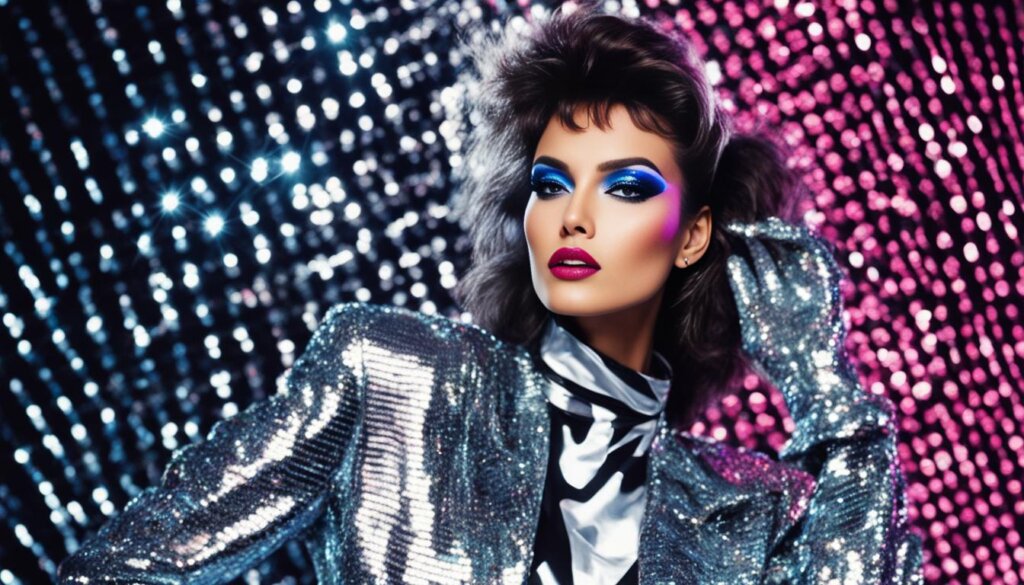
The influence of 80s fashion on art cannot be overstated. The bold, extravagant, and visually striking nature of 80s clothing served as a catalyst for artistic expression. Artists drew inspiration from lacey shirts, neon-colored clothes, abstract patterns, and sequined garments, pushing the boundaries of creativity and embracing the vibrant spirit of the era.
The Impact of Graffiti Art and Neo-expressionism
In the vibrant art scene of the 80s, graffiti art emerged as a powerful form of self-expression in urban areas. Artists took to the streets, using vibrant colors and exaggerated imagery to make a bold statement. Graffiti art became a platform for artists to reflect the socio-political issues of the time, while also showcasing their individuality and talent.
One significant movement that arose during this period was Neo-expressionism, which was a direct response to the minimalist art of the previous decade. Neo-expressionist artists embraced vibrant colors and emotional intensity in their works, rejecting the notion that art should be detached and devoid of emotions. Instead, they sought to evoke strong feelings and engage the viewer on an emotional level.
Neo-expressionism was characterized by bold brushstrokes, raw brushwork, and a visceral approach to art-making. The artists aimed to stir up emotions and create a sense of urgency through their expressive techniques. The use of vibrant colors further intensified the emotional impact of the artworks, conveying a sense of energy and passion.
The fusion of graffiti art and Neo-expressionism brought a new dimension to the 80s art scene. It challenged traditional artistic boundaries and paved the way for a more dynamic and inclusive form of art. This combination of urban street art and emotional intensity sparked a cultural revolution, influencing not only the art world but also inspiring other creative fields such as music, fashion, and design.

Overall, graffiti art and Neo-expressionism were instrumental in shaping the vibrant and expressive nature of 80s art. Through their use of vibrant colors and emotional intensity, artists brought art out of the galleries and into the streets, creating a visual language that resonated with people from all walks of life.
Neo Pop Art: Exploring Popular Culture and Critique
During the 80s, a new art movement known as Neo Pop Art emerged, drawing inspiration from popular culture, advertising, and media icons. However, unlike traditional pop art, Neo Pop Art took a critical and ironic perspective on these subjects, offering a deeper exploration of their impact on society and individuals.
Neo Pop Art artists delved into the pervasive influence of mass media, consumerism, and global branding. They deconstructed and reimagined the imagery from popular culture and advertising campaigns, challenging the viewer to question the superficiality and consumer-driven nature of contemporary society.
This critical perspective allowed artists to highlight the manipulative tactics employed by media and advertising to shape our desires and consumption patterns. They broke down the glossy facade of media icons and exposed the underlying consumerism that permeated popular culture.
Through their artworks, Neo Pop Artists aimed to provoke conversation and stimulate a critical examination of the relationship between individuals, consumerism, and media. They encouraged the audience to question the messages conveyed by advertisements and to consider the impact of popular culture on our values and behaviors.
Neo Pop Art serves as a reflection of the cultural landscape of the 80s, offering a fresh and thought-provoking perspective on popular culture, advertising, and consumerism. The movement continues to inspire contemporary artists, reminding us to view the media-saturated world with a discerning eye.
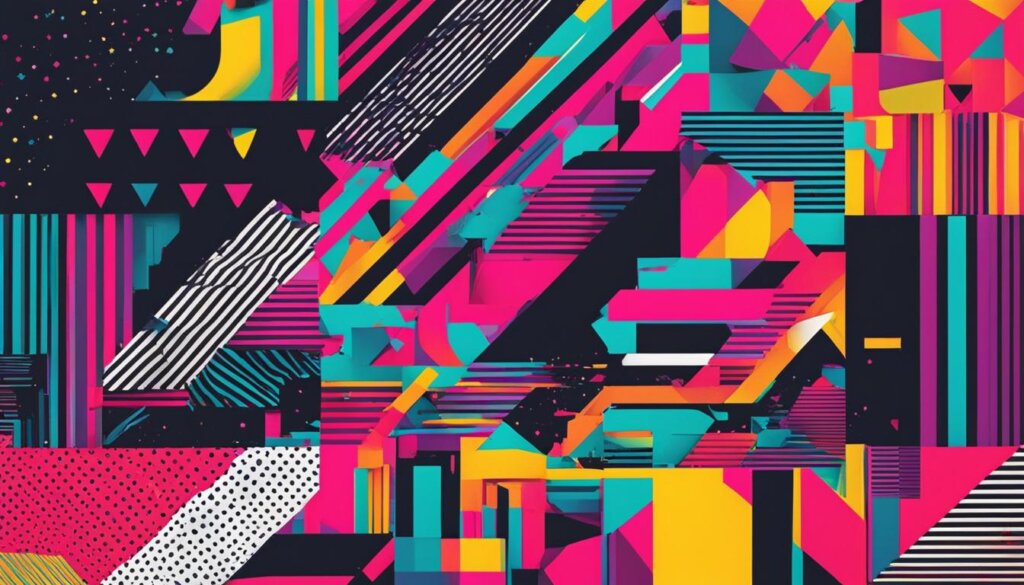
The Colorful World of 80s Advertisements
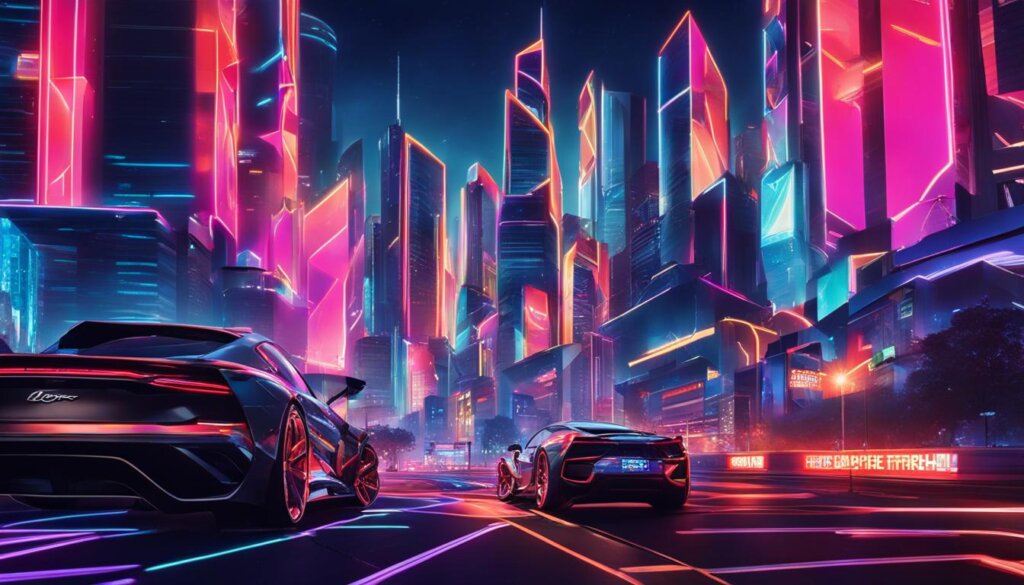
When we think of the 80s, one word that instantly comes to mind is “colorful.” This vibrant and energetic aesthetic was not only present in fashion and art but also in the world of advertisements. 80s advertisements were a visual feast, embracing bold colors, geometric patterns, and pop culture references to captivate audiences.
Picture this: you’re sitting in front of your television, ready to enjoy your favorite show, when suddenly, a commercial bursts onto the screen, demanding your attention with its vivid hues and catchy jingles. These ads were a feast for the eyes, using bright, bold colors to stand out from the crowd. They knew how to grab your attention and make you remember the product or service being advertised.
The 80s were a time of excess and extravagance, and advertisements reflected this spirit. Companies embraced bold visuals, utilizing geometric patterns to create eye-catching designs. These patterns, with their clean lines and symmetrical shapes, added a sense of modernity and sophistication to the advertisements. Whether it was a simple grid or an intricate arrangement of shapes, geometric patterns were an integral part of 80s ad design.
Pop culture references were also a popular feature in 80s advertisements. Advertisers leveraged the popularity of movies, music, and television to connect with their audience. From catchy slogans to using popular characters, these references tapped into the collective nostalgia of the viewers and made the ads more relatable.
But it wasn’t just the visuals and references that made 80s advertisements memorable. The commercials themselves were often filled with humor and over-the-top testimonials, making them entertaining to watch. They used humor to create a connection with the viewers, leaving a lasting impression.
So, the next time you come across an 80s advertisement, prepare to be transported back to a time of bold colors, geometric patterns, and pop culture references. These ads were the epitome of the vibrant and energetic spirit of the 80s.
The Influence of Economic Prosperity on 80s Art
During the vibrant 80s, economic prosperity had a profound impact on the art scene. Middle-class families were experiencing a sense of optimism and embracing extravagant lifestyles. As a result, the art movement of the era reflected this newfound prosperity and optimism, embracing vibrant colors and self-expression.
The economic boom of the 80s allowed middle-class families to pursue their desires and indulge in luxuries. This newfound prosperity gave individuals the confidence to explore their creativity and express themselves through art. Artists were inspired by the opulent lifestyles and optimistic outlook of the people around them, resulting in vibrant and energetic artworks.
Optimism became a driving force in the art world during this decade. Artists wanted to convey the sense of hopefulness and excitement that surrounded them. Through their vibrant works, they aimed to reflect this positive outlook and inspire others to embrace their own creativity and passions.
The extravagance and luxurious lifestyles of the 80s allowed artists to experiment with vibrant colors and bold techniques. The art scene became a playground for creativity, with artists pushing boundaries and exploring new artistic expressions.
One of the notable characteristics of 80s art was its focus on self-expression. Artists used their artworks as a means of personal expression and reflection. The vibrant colors and bold techniques allowed them to convey their thoughts and emotions in a visually striking manner.
- The economic prosperity of the 80s influenced the art scene.
- Middle-class families indulged in extravagant lifestyles.
- The optimistic outlook of the era translated into vibrant artworks.
- Artists were inspired by the opulence and positivity of the time.
- Self-expression and vibrant colors were prominent in 80s art.
The Fusion of Technological Advancements and Artistic Expression
Technological advancements in the 80s opened up new possibilities for artistic expression. The emergence of personal computers and digital displays revolutionized the way artists created and presented their works. With these technological tools at their disposal, artists began incorporating futuristic aesthetics into their pieces, pushing the boundaries of traditional art forms.
Inspired by the rapid advancement of technology, artists in the 80s embraced neon lights, grids, and pixelated graphics as prominent design elements. Neon lights, with their vibrant and luminous glow, added a futuristic touch to installations and sculptures, creating visually stunning experiences. Grids, on the other hand, became a symbol of the digitized world, representing order and structure in the midst of technological chaos.
The pixelated graphics, reminiscent of early computer graphics, became a hallmark of 80s art. Artists used pixelation to convey both the limitations and creative possibilities of the digital medium. This aesthetic choice injected a sense of nostalgia while simultaneously pushing the boundaries of artistic expression.
Exploring the Visual Language of Technology
- The use of neon lights added a sense of energy and modernity to artworks.
- Grids symbolized the intersection between technology and creativity.
- Pixelated graphics showcased the artistic potential of digital tools.
The fusion of technological advancements and artistic expression in the 80s created a unique visual language that captured the essence of the era. Artists embraced the futuristic aesthetics, using neon lights, grids, and pixelated graphics to create visually captivating and thought-provoking artworks.
Typography and Color in 80s Design
The typography of 80s design was a bold and expressive form of artistic communication. To capture the vibrant spirit of the era, designers embraced bold and geometric typefaces that demanded attention. The use of these typefaces created a visual impact, embodying the dynamic and energetic nature of 80s design.
But it wasn’t just about the typefaces themselves. Designers also played with vibrant colors and metallic fillings to enhance the typographic elements. The incorporation of vibrant colors added an extra layer of excitement and personality to the typography, while metallic fillings brought a touch of luxury and sophistication.
In addition to color, designers employed various techniques to make the typography pop. Airbrush effects, gradients, and layering techniques were utilized to add depth and complexity, creating a visually striking composition that captivated the audience.
The typography in 80s design wasn’t just a way to convey information—it was a design element in its own right. Typography played a crucial role in shaping the overall aesthetic of the design, immersing the viewer in the vibrant and energetic world of the 80s.
Geometric Patterns and Futuristic Motifs in 80s Design
Geometric patterns and futuristic motifs played a significant role in shaping the dynamic and visually captivating designs of the 80s. Clean lines, sharp angles, and abstract forms were expertly combined to create visually striking compositions that immediately caught the eye.
Whether it was in fashion, art, or interior design, geometric patterns were everywhere in the 80s. Bold and eye-catching, these patterns added a sense of energy and movement to any design. From zigzags and triangles to spirals and chevrons, geometric patterns were a dominant feature of the 80s aesthetic.
But it wasn’t just about the shapes. The incorporation of futuristic motifs further enhanced the avant-garde nature of 80s design. Clean lines, minimalistic forms, and metallic finishes gave designs a sleek and modern feel. These futuristic elements added a sense of sophistication and technological advancement to the visual landscape of the 80s.
The Memphis Style: Embracing Electric Whimsy
One particular style that epitomized the use of geometric patterns and futuristic motifs in 80s design was the Memphis style. Originating in Italy, the Memphis movement embraced an electric and whimsical aesthetic. With its bold colors, asymmetrical shapes, and quirky combinations, the Memphis style pushed the boundaries of traditional design.
The Memphis style became synonymous with the 80s, influencing not only art and design but also architecture and fashion. Its futuristic motifs and geometric patterns added a playful and vibrant touch to various creative fields, leaving a lasting impact on the entire decade.
- A mix of vibrant colors and sharp angles created a visually striking composition.
- Geometric patterns added energy and movement to designs.
- Futuristic motifs, like clean lines and metallic finishes, added a modern and avant-garde touch.
- The Memphis style embraced electric whimsy, pushing the boundaries of traditional design.
Overall, the use of geometric patterns and futuristic motifs in 80s design created a visually captivating and energetic aesthetic. Clean lines, abstract forms, and vibrant colors came together to form iconic designs that still resonate with us today.
Floral Prints and the 80s Fashion Aesthetic
When we think of 80s fashion, bold colors, geometric shapes, and futuristic elements often come to mind. However, alongside these trends, large-scale floral prints also played a significant role in defining the 80s fashion aesthetic. These prints embraced bright colors and abstract interpretations, adding a sense of modernity and edginess to traditional floral designs.
The eclectic nature of 80s fashion was evident in the mix of different floral varieties used in the prints. From vibrant roses and bold sunflowers to abstract interpretations of daisies and tulips, floral patterns became a statement in themselves. Designers experimented with unconventional color combinations, often mixing unexpected hues to create visually striking arrangements.
Whether it was a flowy summer dress adorned with oversized flowers or a tailored blazer featuring a vibrant floral print, these designs exuded a sense of confidence and individuality. The juxtaposition of delicate floral motifs with bold and bright colors made a bold fashion statement, perfectly capturing the spirit of the 80s.
Looking back, the 80s era was a time of creativity and self-expression, and floral prints in fashion were no exception. They brought together elements of nature, bright colors, abstract interpretations, and eclectic arrangements, creating a unique and vibrant aesthetic that still influences fashion today.
Conclusion
The 80s fashion scene was a whirlwind of vibrant trends and iconic style icons that continue to inspire us today. From neon-colored clothing to bold patterns and eclectic arrangements, the fashion of the era embraced a bold and colorful aesthetic that left an indelible mark on popular culture.
In recent years, there has been a resurgence of interest in 80s clothing as people across the United States and beyond adopt the unique style of the era. By incorporating vintage 80s pieces into their wardrobes and mixing them with contemporary fashion, individuals can rock the 80s style and pay homage to this iconic decade.
Whether it’s sporting oversized blazers with shoulder pads, donning vibrant leggings, or accessorizing with retro-inspired accessories, there are countless ways to embrace the vibrant fashion trends of the 80s. Fashion icons like Madonna, Michael Jackson, and Princess Diana continue to serve as influential figures, inspiring us to explore and experiment with this bold and colorful fashion aesthetic.
So, grab your leg warmers and your acid-washed jeans, and let’s celebrate the vibrant fashion trends and iconic style icons of the 80s. By adopting the 80s style, we can express our individuality, channel our inner fashionista, and add a touch of nostalgia to our modern-day wardrobes.
